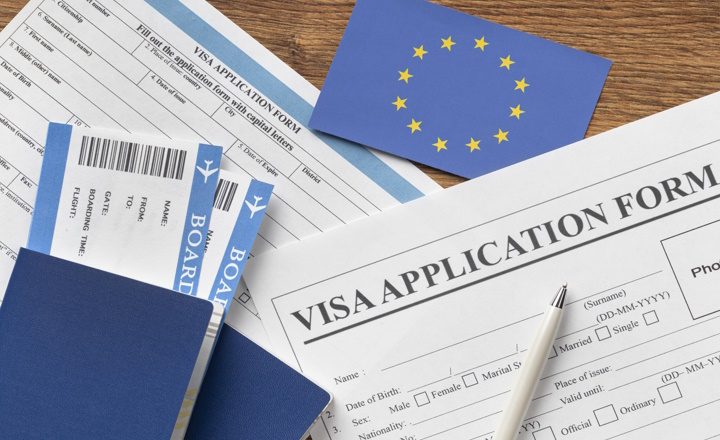
There’s something magnetic about Europe. Maybe it’s the blend of languages and cuisines across such small distances. Or the seamless train rides from country to country, each with its own rhythm and soul. But for non-European nationals, this journey doesn’t begin at the airport. It begins with a decision—a decision to apply for a europe visa.
This small document holds the power to open borders and shape experiences. But too often, it’s viewed as just another piece of paperwork. That perception couldn’t be more wrong.
In truth, the europe visa is one of the most versatile and strategic travel tools available to global citizens. If used right, it’s a ticket not just to one country—but to an entire region of shared history, modern innovation, and cultural richness.
Why one visa is enough for 27 nations
The magic behind the europe visa is the Schengen Agreement, a collaboration between 27 countries that removed internal borders and created one of the world’s most accessible travel zones. Once your visa is approved and you enter one of the schengen area countries, you’re free to travel to the others without additional permits or stamps.
Imagine walking through the streets of Madrid one day and exploring the canals of Venice a few days later—all on the same visa. No delays at borders, no reapplications, no wasted time. Just pure travel freedom.
What used to be a diplomatic maze has become an open road for adventurers, professionals, students, and artists from around the globe.
Who needs a europe visa?
If you're from a country that doesn’t have visa-free access to the Schengen Zone (like India, China, South Africa, or most nations in Asia, Africa, and the Middle East), you’ll need to submit a visa application for europe before traveling.
The visa is typically issued for short stays—up to 90 days within a 180-day window. It's perfect for tourism, business meetings, visiting friends or family, and short study programs.
It’s not a long-term residency permit. But for those who travel smartly, it offers a surprising amount of flexibility and range.
Many confuse the europe visa with the upcoming european travel authorization system (ETIAS). ETIAS is for citizens of visa-exempt countries and involves a simple online registration. The europe visa, on the other hand, is for travelers who must undergo a more formal application and document review before arrival.
How to prepare a winning application
The visa requirements for europe are standardized, but that doesn’t mean you can take them lightly. The consulates want proof that your intentions are genuine, that your trip is well-planned, and that you won’t overstay your welcome.
Here’s what you’ll need:
A valid passport (issued within the last 10 years and valid for at least 3 months after departure from Europe)
Two biometric passport photos
A filled-out Schengen visa application form
Proof of accommodation (hotel bookings, rental contracts, or invitation letters)
A round-trip flight itinerary
Proof of sufficient funds (bank statements or sponsor letters)
A clear and realistic travel itinerary
Travel insurance with a minimum of €30,000 in coverage, valid across the Schengen Area
This last point is often underestimated. Without proper insurance, your application will likely be rejected. It’s non-negotiable.
Providers like AXA offer fast, embassy-approved insurance plans designed specifically for visa purposes. With instant certificates and full coverage in all schengen area countries, they’re the smart choice for travelers who want speed and security.
Need reliable coverage to support your application? Apply for your europe visa with AXA-backed travel insurance to ensure your documents are always complete.
The real power of the europe tourist visa
It’s easy to think of a europe tourist visa as just a means to see a few landmarks. But in reality, it allows you to build a layered journey—one that unfolds across borders.
You can mix the old with the new: visit Roman ruins in Italy, then experience urban innovation in Berlin. Or combine natural beauty with culture: hike the Dolomites, then admire the Louvre’s treasures.
The real value lies in how you use your 90 days. Some travelers plan tightly, others leave room for spontaneous exploration. And that’s the beauty of the system—it supports both.
Don’t want to leave Europe just yet? Time your entry carefully. The 90/180 rule is based on rolling windows, so with careful planning, you can leave and re-enter legally after spending time outside the Schengen Area (like in the UK or the Balkans).
Navigating airports, borders, and expectations
Once approved, your europe visa will be affixed to your passport as a sticker. It will state your name, visa validity, and allowed number of entries (single, double, or multiple).
It’s important to understand what this sticker really means:
Visa validity is the window during which you’re allowed to enter.
Duration of stay refers to the total number of days you can remain.
Number of entries dictates how many times you can leave and re-enter during the visa’s validity.
At your point of entry (especially during your first visit), border control may ask for proof of accommodation, return ticket, and insurance. Always carry physical and digital copies of your documents—even if you're already holding an approved visa.
This helps ensure smooth passage, especially during peak travel seasons or if your itinerary includes lesser-known border crossings.
Europe visa or ETIAS: which applies to you?
It’s worth briefly clarifying the growing confusion between the europe visa and the ETIAS system.
The europe visa is a traditional, embassy-issued document for travelers from countries that need pre-approval to enter the Schengen Zone.
ETIAS is an electronic screening process (starting in 2025) for citizens of visa-exempt countries like the US, Canada, and Australia.
If your country is not on the visa-exempt list, you must apply for the full Schengen visa through your local consulate. No exceptions. If you’re unsure which process applies to you, check your country’s visa relationship with the EU on official government websites—or consult a trusted provider like AXA for guidance.
Why insurance isn’t optional—it’s essential
We can’t emphasize this enough: travel insurance is a legal requirement. But it’s also your first defense against unexpected costs, disruptions, or emergencies.
Lost luggage, a sudden illness, or a cancelled return flight can quickly turn your dream trip into a logistical nightmare. Having robust travel insurance with medical, hospital, and repatriation coverage isn’t just smart—it’s necessary.
AXA’s Schengen-compliant plans are designed for clarity, affordability, and speed. And because consulates know and trust the brand, it helps strengthen your entire visa file.
Apply today for your europe visa and step into a network of cultures, cities, and endless movement—with confidence.
| Next > |
|---|





